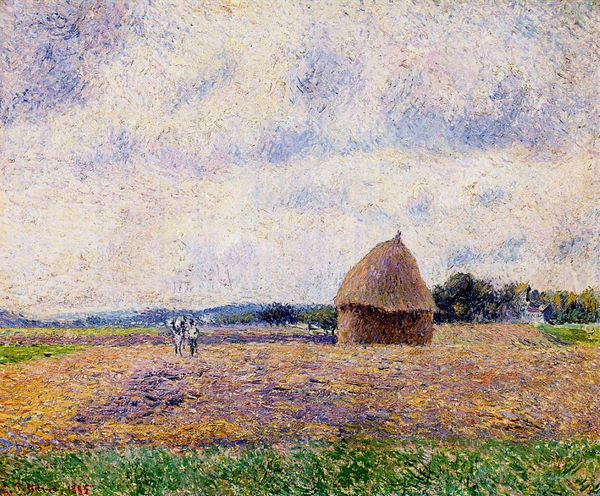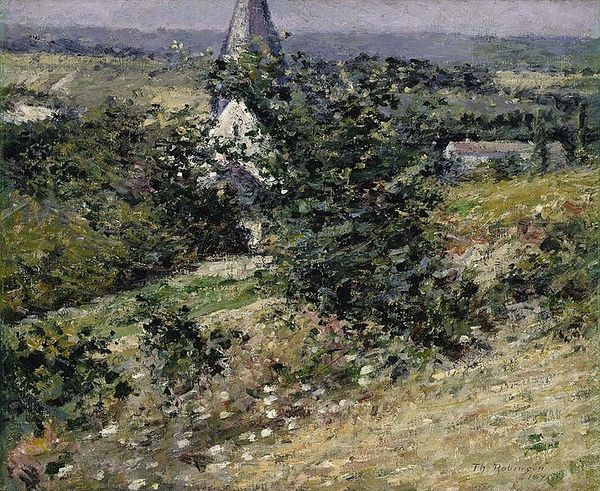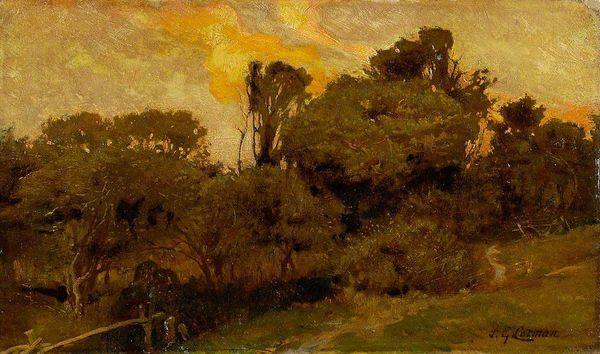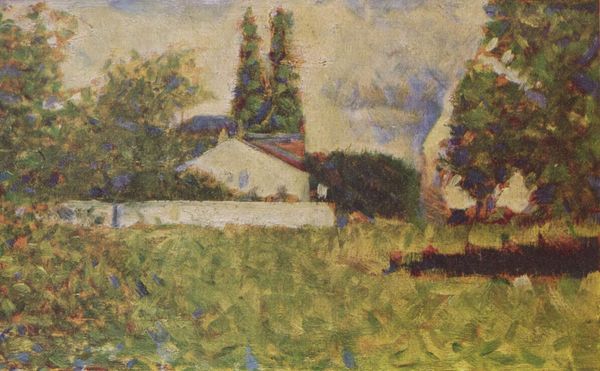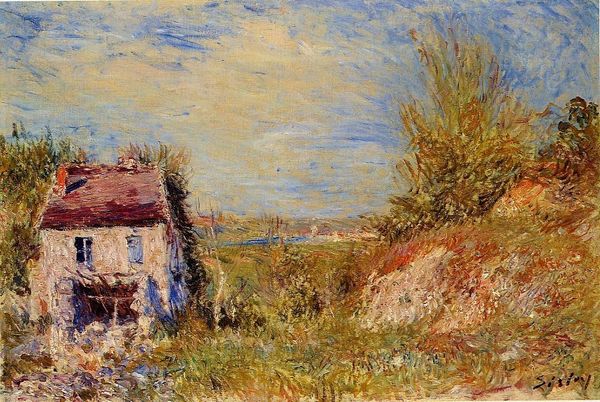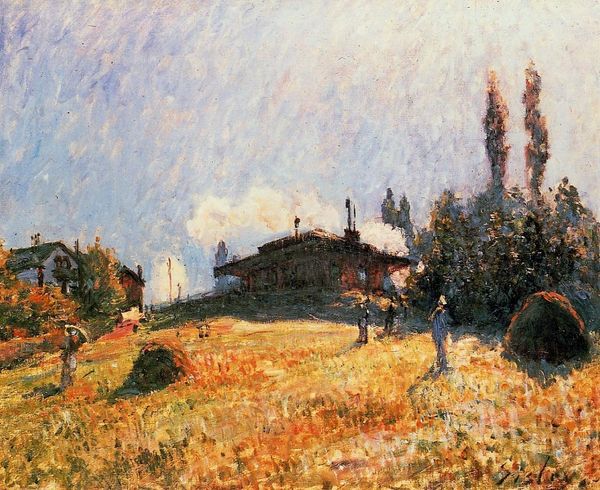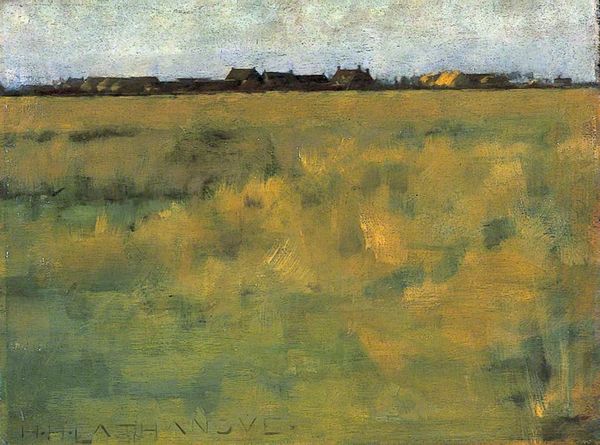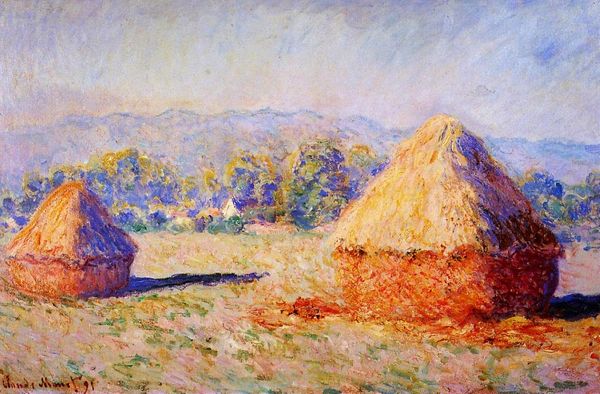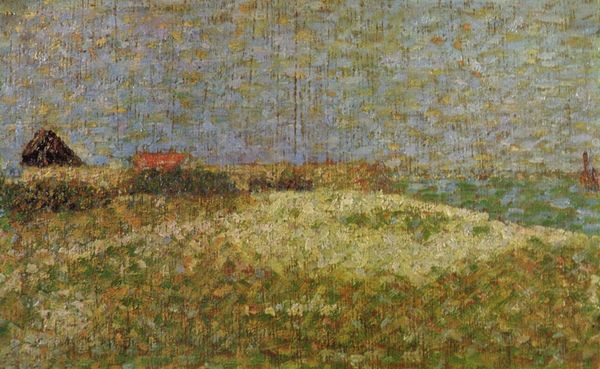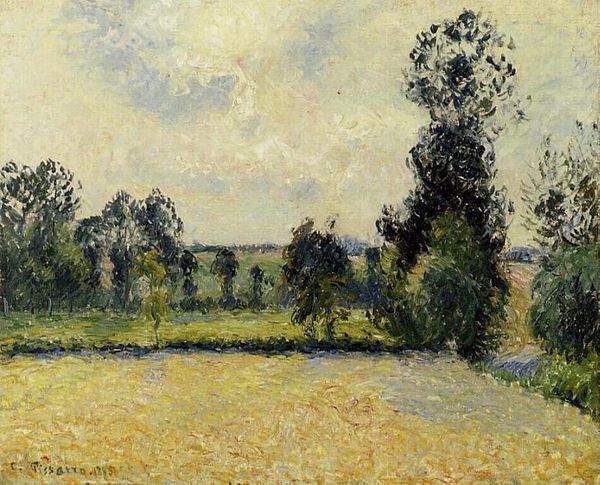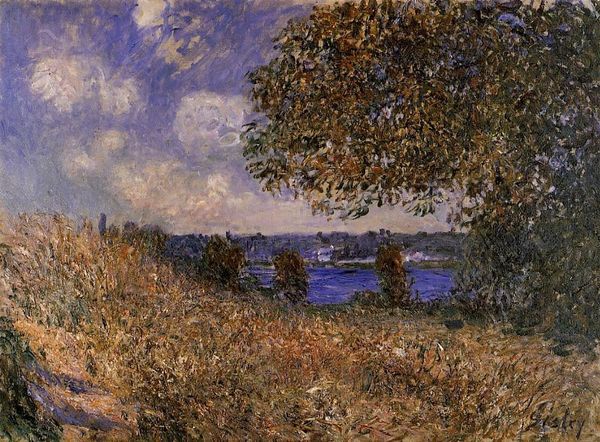
painting, plein-air, oil-paint
#
tree
#
sky
#
rural-area
#
painting
#
impressionism
#
plein-air
#
oil-paint
#
landscape
#
impressionist landscape
#
nature
#
nature
Dimensions: 38.1 x 55.88 cm
Copyright: Public domain
Editor: Here we have Alfred Sisley's "Haystack," an oil on canvas from 1877. The colors are so muted, almost blending into each other. I get this feeling of…quiet transience, if that makes sense. What catches your eye when you look at this, from a formal perspective? Curator: The structural relationship between the haystack and the sky is fascinating. Notice how Sisley uses almost parallel brushstrokes to define both forms, creating a visual echo. The haystack is a dense, almost monolithic form on the left, balanced by the lighter, more diffused treatment of the trees on the right. Editor: So, it’s less about the subject matter, and more about how he represents it through color and brushstroke? Curator: Precisely. The haystack isn't just a haystack; it’s a compositional element. Consider the interplay of light; the soft, hazy quality suggests a fleeting moment. Sisley is capturing not just a scene, but a visual impression. How do you perceive the color palette contributing to the overall structure? Editor: It seems to lack vibrant hues, maybe focusing on gentle contrasts instead. How much do you think Impressionism emphasizes the role of the viewer in interpreting these fleeting impressions? Curator: In that sense, it's almost phenomenological. The brushstrokes become traces of perception, almost indexical signs of the artist's encounter with the landscape. Editor: It is all about how Sisley’s rendering transforms it into something beyond a simple agricultural scene. It feels quite intimate. Curator: Indeed. By focusing on the formal qualities, we can start to decode the visual language Sisley employs to convey that intimacy. I have to agree it's definitely not just a haystack!
Comments
No comments
Be the first to comment and join the conversation on the ultimate creative platform.

